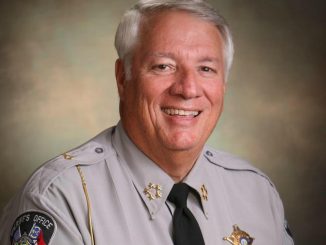BURNSVILLE — Construction is underway on a new planetarium located at the Mayland Community College’s Bare Earth to Sky Park in Yancey County and will open to the public spring of 2021.
Named after key donors to the project, the Glenn and Carol Arthur Planetarium will offer 60 seats for viewing of a 36-foot diameter screen housed inside a 42-foot-wide geodesic dome. The seats come from the Morehead Planetarium in Durham, which recently refurbished its own viewing seating.
“We wanted the seats to be movable and a lot of open space so we could have more events,” Margaret Earley-Thiele, executive director of the Mayland Community College Foundation, told North State Journal. She added that events like dinner under the stars or even proms could be held in the space under the stars.
Groundbreaking for the construction on the planetarium got underway earlier this month, and Earley-Thiele says that while COVID-19 caused delays, they expect to be open in early spring of 2021.
The idea for a planetarium sprang out of issues with star gazing cancelations due to weather.
“We get people regularly from Atlanta, from Charlotte, from Washington D.C. and from all along the southeast who want to come and see the dark skies,” said Earley-Thiele. “And so, it was really disappointing to those people when we had to cancel the event.”
The Bare Earth to Sky Park is also home to the largest public telescope in North Carolina. The park’s observatory, which is open to the public, houses the 34-inch telescope. The observatory sits at an elevation of 2,736 feet and offers a 360-degree view.
“You can see the rings of Saturn and the eye of Jupiter and when you’re looking at the craters on the moon, it’s like you’re in a spaceship looking out the window,” said Earley-Thiele. “It’s so crystal clear that you can see all these really in-depth details of the moon. It’s very incredible.”
The park has been operating for around five years and hosts community viewing nights which are open to the public.
“You can just buy individual tickets and come up, although with COVID we’re not doing that at the moment, but we are currently hosting private events,” Earley-Thiele said. “You can reserve and rent the observatory for a night. Right now with COVID, we’re limiting it to 10 people.”
Earley-Thiele said the park has two astronomy observatory managers who spend two hours giving attendees a tour through the night sky. She said it’s “just a great experience” and it is an activity that is perfect for COVID because it takes place outside and people can be socially distanced.
Also located on the park grounds is the Paul and Susan O’Connell Conference Center, an aquaponics and hydroponics facility, a visitors’ center, a micro-propagation lab and various garden trails.
The Bare Earth Sky Park was formerly called the EnergyXchange, which Earley-Thiele described as an artist and studio community, as well as an incubator space which used the methane from that was being off gas from the landfill under the site to power the kilns for the ceramic and glass studios. The methane was also used to power the radiant floor heating.
The park area had originally been a mica mine and then it became a landfill once the mine closed.
After about 12 years of operation, EnergyXchange closed because the methane ran out and at that point Mayland took it over and Earley-Thiele said various people who worked at the college pointed out it was a “fabulous place for stargazing because it was so dark.”
In 2014, Mayland sought international dark sky certification for the park. The process to get the certification took over a year and involved the International Dark-Sky Association coming out and taking light readings at all hours of the night and throughout the year.
“We were No. 22 in the world to receive that certification, and what that means is that there is very little to zero light pollution,” said Earley-Thiele. She added that there are now over 100 dark-sky certified locations in the world.
Mayland hopes that the planetarium will be an added draw that benefits the rural area communities as well as being educational and entertaining.
“We want the space to be really versatile as well as educational, so we will offer traditional astronomy shows and planetarium shows,” explained Earley-Thiele. “We will also offer some STEM education where you can sort of have that ‘IMAX experience’ of touring through the veins of the human body and some non-astronomy related education as well as just entertaining laser light shows and things like that.”
The planetarium will have more “buzz” as of May 2021 when a muralist named Matt Willey will paint the exterior of the planetarium’s geodesic dome with a bee mural. Willey is also known for murals of bees at the Smithsonian Zoo and the Burt’s Bees headquarters in Durham.
For more information on the Bare Earth to Sky Park’s observatory, upcoming planetarium and directions to the site, visit Mayland.edu/Observatory.



